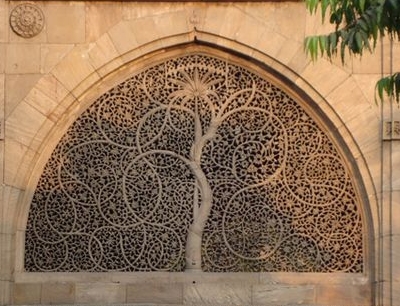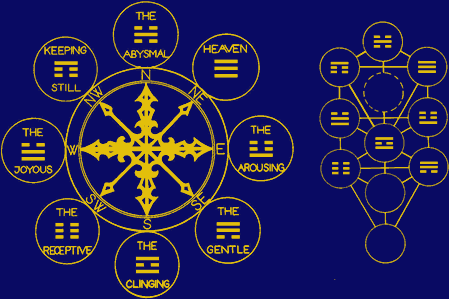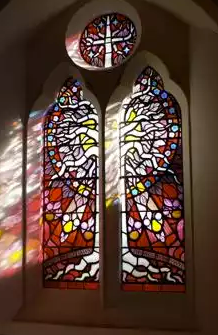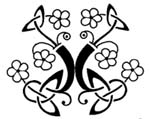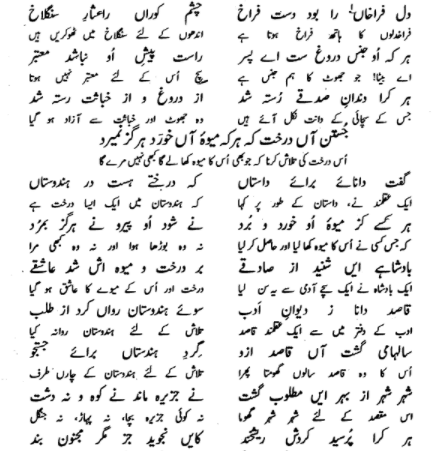Tree of Life & World Tree Iconography
Tree of Life Iconography from Around the World
Perhaps humanity's most enduring symbol of divinity, the Tree of Life is a metaphor that inspires many interpretations by history's most dominant religions and connects us, even today, to each other and the ages. Here is a quick tour of Tree of Life iconography and meanings in loose chronological order, according to the age of each culture. (My apologies for the quality of some of these sources; best i could find quickly.) -ChrisS
###
Mesopotamia
'In Assyrian culture, a series of criss-crossing lines and nodes were used to depict the tree of life. This symbol has many different meanings. Priests and scholars are not sure about its exact interpretation/translation.' (Source) Learn more at CovenantofBabylon. "In Babylonian mythology, the Tree of Life was a magical tree that grew in the center of paradise." (Source) The third image below, a Sumerian stone carving showing the Tree of Life, is believed to be about 4,500 years old. (Source)
Hinduism
"Krishna compares human life with a tree. In the Bhagavad Gita he says human life is like the eternal Ashvattha tree having roots growing above and branches beneath." (Source)
Traditional Warli folk art.
Modern Hindu art.
A modern interpretation.
Taoism
"A Taoist story tells of a tree that produces a peach every three thousand years. The one who eats the fruit receives immortality."
The iChing & the Tree of Life (Kabalah).
Egypt
Isis and Osiris emerged from the tree of life. (Source)
Ancient and modern Egyptian art.
Judaism
The "Tree of Life" has several aspects in Jewish thought. "The Torah is the tree of life." (Source) In the Torah the tree of life first appears at the center of paradise. (Genesis 2:9, 3:22-24). (Source) The Tree of Life carries an implied promise of immortality and trees. Trees, in general, have tremendous significance throughout Judaism. (Source) The Menorah symbolizes light, growth, and the unity and wisdom of the Torah / Tree of Life. (Source)
The Kabbalah
Kabbalists believe the Tree of Life to be a diagrammatic representation of the process by which the Universe came into being. (Source)
MesoAmerica (World Tree)
"The concept of world trees is a prevalent motif in pre-Columbian Mesoamerican cosmologies and iconography. World trees embodied the four cardinal directions, which represented also the fourfold nature of a central world tree, a symbolic axis mundi connecting the planes of the Underworld and the sky with that of the terrestrial world." (Source)
A world tree carving.
Christianity
"The tree of life is on the first page of the Genesis and the last page of Revelation." (Dr. Matthew Sleeth, paraphrased.) Out of the ground the LORD God caused to grow every tree that is pleasing to the sight and good for food; the tree of life also in the midst of the garden, and the tree of the knowledge of good and evil. (Genesis 2:9) 'In Christianity the tree of life bears fruits which grant immortality.' (Source) 'The tree first appears in Genesis 2:9 and 3:22-24 as the source of eternal life in the Garden of Eden, from which access is revoked when man is driven from the garden. It then reappears in the last book of the Bible, the Book of Revelation, and most predominantly in the last chapter of that book (Chapter 22) as a part of the new garden of paradise.' (Source)
1870 lithograph. Note the angels are tending the tree and protecting it from the devil, deforester.
Celts
"The Celtic Tree of Life is a well known symbol. For the Ancient Celts, the Tree of Life was a symbol of balance and harmony. The Tree of Life was a representation of how the nature’s forces combined to create balance and harmony." (Source) "The Tree was a central part of early Celtic spirituality and a source of basic sustenance - a bearer of food, a provider of shelter and fuel for cooking and warmth. Without trees, life would have been extraordinarily difficult. Wood from sacred trees had magical properties... a connection to the world of the spirits and the ancestors, living entities, and doorways into other worlds." (Source)
Catholicism
"As per the beliefs held by Catholic Christians, humanity free of sins and corruption is symbolized by the tree of life." (Source) "Saint Bonaventure taught that the medicinal fruit of the Tree of Life is Christ himself. Saint Albert the Great taught that the Eucharist, the Body and Blood of Christ, is the Fruit of the Tree of Life." (Source)
Orthodoxy
"Under the Old Covenant the Tree of Life continued to remain hidden from humanity, and it was only with the Crucifixion that it was finally made manifest." (Source) "The Cross is the Tree of Life. Let us be clear. The Cross is not a symbol of the Tree of Life, not a figure of the Tree of Life: it is the Tree of Life." (Source) "Some troparia (hymns) of the Christmas feast say that Christ, through His Incarnation, is the Tree of Life." (Source)
Islamic Sandstone Art
"The most renowned of all Tree of Life patterns is to be found in the windows of Sidi Sayyid's Mosque at Ahmadabad, India. This delicate tracery is cut out of Gujarat sandstone and is a marvel of skill. The Tree of Life simply means — Life developed to its highest state of perfection. This is true both in the symbolism and workmanship of these window screens, for they surpass even the most exquisite tracery in precious marbles to be found elsewhere, and none can equal it in richness and depth of meaning." (Source)
India is one of the places credited with the earliest Tree of Life imagery. These sandstone carvings circa 1573.
Islam
"The Tree of Immortality (شجرة الخلود) is the tree of life motif as it appears in the Quran. It is also alluded to in hadiths and tafsir. Unlike the Biblical account, the Quran mentions only one tree in Eden, also called the tree of immortality, which Allah specifically forbade to Adam and Eve. Satan, disguised as a serpent, repeatedly told Adam to eat from the tree, and eventually both Adam and Eve did so, thus disobeying Allah." (Source)
Native America
"The Tree of life represents all that is life, encompassing all that exists upon the planet." (Source) “You have noticed that everything an Indian does is in a circle, and that is because the power of the world always works in circles, and everything tries to be round. In the old days all our power came to us from the sacred hoop of the nation and so long as the hoop was unbroken the people flourished. The flowering tree was the living center of the hoop, and the circle of the four quarters nourished it." (Black Elk) "In the Navajo way of thinking, the tree became a stalk of corn growing from the sacred ceremonial basket, a symbol of life and the birds represent abundance and balance in nature." (Source) Modern Navajo depictions:
Norse Mythology
There are multiple interpretations by scholars about the meaning of the word, "Yggdrasil." This website has a great 3 minute video and text explaining some views on Yggdrasil's meaning.
Mormonism
The tree of life vision was published in the Book of Mormon by Joseph Smith in 1830. "The vision includes a path leading to a tree symbolizing salvation, with an iron rod along the path whereby followers of Jesus may hold to the rod to avoid wandering off the path." (Source)
##
CLASSICAL ART
India
CONTEMPORARY ART
Keith Haring
Gustav Klimt
CHILDREN'S ART

